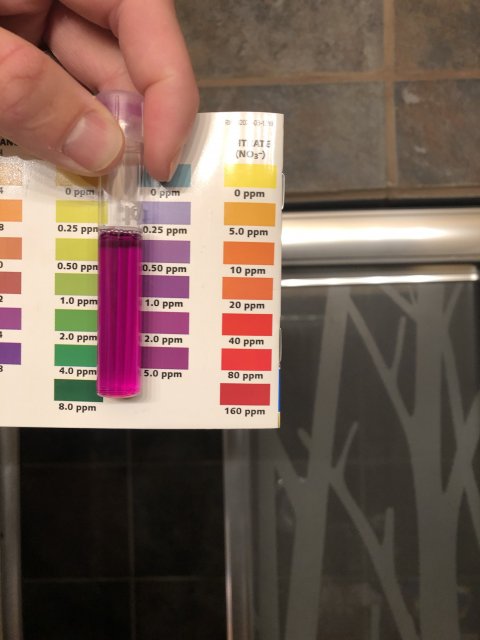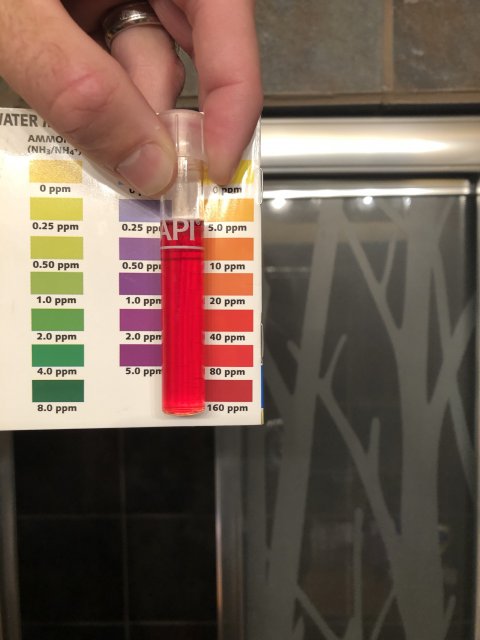NO! NO! NO! It does not contain the proper Nitrite oxidiers. Nitrobacteri is a nitrie oxidiers that thrives in higher nitrite levels that are founf in an established tank. If one uses an starter product that contains them, it appears to work but what is really going on is something different. In doing the cycle whether with fish or fishless, the initial nitrite levels created are much higher than will ever be seen in a cycled tank. the same is true for ammonia. So what is going on in the tank when Nitrobacter is used?
Initially, with the high nitrite levels they work. They will lower nitrite levels. When they do so the result is nitrite levels decrese and they reach such a lower level that the Nitrobacter start to die back and the Nitrospira begin to reproduce. And the result in the end is the nitrobacter is gone and has been replaced by Nitrospira.
If you look at the other products which contain Nitrospira, they pretty much say one dose is all that is needed for cycling. of course they also want to sell more product. So they syggest one can use them after water changes and adding new fish. What I know is that in 20 years of keeping fish and cycling tanks, including using Dr. Tim's. I have never added more than the initial dose and never had any need to add more to am established tank.
One way to look at this is from the point of when and how many fish can one add. When I do a fishless cycle I normally fully stock a tank when done. Adding fish gradually actually undoes the advantage a full fishless offer. If one knows they plan to add fish over time rather than all at once, there is no need to dose ammonia to over 2 ppm. in fact just 1 ppm may be sufficient for this approach. Moreover, if one dose only 1 ppm. the cycle will go much faster sicne fewer bacteria are required to process that amount of ammonia and the nitrite it creates.
The Nitrobacter in a tank dies and adds to organic waste which may help induce an episode of cloudy water.
Back to this mornings test results->
If the pH has not dropped. please test ammonia again. It should have been down. There is no way it can have dropped from 3.25 or so a day after you added the last ammonia and then not continue dropping. Neither the level of ammonia or nitrite your test show is sufficient to stall a cycle. Of that I am certain.
Further, the bacteria only reproduce when there is more ammonia and/or nitrite available than the current numbers can use. So if one has readings for ammonia and or nitrite during a cycle, the bacteria should be reproducing. If so, they should be able to work faster to reduce ammonia and nitrite. Moreover, the ammonia bacteria reproduce faster, so ammonia your should have dropped even if nitrite takes a bit longer to do so.
If you changed no water, added no more ammonia or anything else, and have a pH above 7 plus adequate oxygen in the water, then I think your have either dmade an error in testing or misread the results. Did you rinse the vial both inb tap and in tank water before filling it from mid-level? If you have a KH test, do that one as well. But I doubt the KH is too low if the pH has not dropped.
At any rate, please retest and confirm the numbers to make this old man happy. As I said earlier in this thread, cycling is a process. It should proceed in a fairly predictive fashion. There are variables which will effect the timing but not the actual process. This is what allows one to know how a cycle is progressing. Testing is our window into what is happening on a microscopic level. Also, since you are testing regularly, it would help if you used the same light source when you compare the vial color to the bars. Different wavelength/teperature light will cause colors to look differently.
On a few occasions either my test kits or my digital testing equipment has given me results that did not make sense. A bit of work has usually allowed me to discover why. Mostly it is equipment or reagent issues. Digital testing requires that one recalibrate the equipment now and then. But other reasons can be the cause.
One last observation. What might inhibit the ammonia bacteria or cause an inaccurate ammonia reading should not automatically do the same for nitrite. Those bacteria should often still be reproducing and nitrite should be dropping. If the ammonia ones stop working, there is no new nitrite being created.
Initially, with the high nitrite levels they work. They will lower nitrite levels. When they do so the result is nitrite levels decrese and they reach such a lower level that the Nitrobacter start to die back and the Nitrospira begin to reproduce. And the result in the end is the nitrobacter is gone and has been replaced by Nitrospira.
If you look at the other products which contain Nitrospira, they pretty much say one dose is all that is needed for cycling. of course they also want to sell more product. So they syggest one can use them after water changes and adding new fish. What I know is that in 20 years of keeping fish and cycling tanks, including using Dr. Tim's. I have never added more than the initial dose and never had any need to add more to am established tank.
One way to look at this is from the point of when and how many fish can one add. When I do a fishless cycle I normally fully stock a tank when done. Adding fish gradually actually undoes the advantage a full fishless offer. If one knows they plan to add fish over time rather than all at once, there is no need to dose ammonia to over 2 ppm. in fact just 1 ppm may be sufficient for this approach. Moreover, if one dose only 1 ppm. the cycle will go much faster sicne fewer bacteria are required to process that amount of ammonia and the nitrite it creates.
The Nitrobacter in a tank dies and adds to organic waste which may help induce an episode of cloudy water.
Back to this mornings test results->
If the pH has not dropped. please test ammonia again. It should have been down. There is no way it can have dropped from 3.25 or so a day after you added the last ammonia and then not continue dropping. Neither the level of ammonia or nitrite your test show is sufficient to stall a cycle. Of that I am certain.
Further, the bacteria only reproduce when there is more ammonia and/or nitrite available than the current numbers can use. So if one has readings for ammonia and or nitrite during a cycle, the bacteria should be reproducing. If so, they should be able to work faster to reduce ammonia and nitrite. Moreover, the ammonia bacteria reproduce faster, so ammonia your should have dropped even if nitrite takes a bit longer to do so.
If you changed no water, added no more ammonia or anything else, and have a pH above 7 plus adequate oxygen in the water, then I think your have either dmade an error in testing or misread the results. Did you rinse the vial both inb tap and in tank water before filling it from mid-level? If you have a KH test, do that one as well. But I doubt the KH is too low if the pH has not dropped.
At any rate, please retest and confirm the numbers to make this old man happy. As I said earlier in this thread, cycling is a process. It should proceed in a fairly predictive fashion. There are variables which will effect the timing but not the actual process. This is what allows one to know how a cycle is progressing. Testing is our window into what is happening on a microscopic level. Also, since you are testing regularly, it would help if you used the same light source when you compare the vial color to the bars. Different wavelength/teperature light will cause colors to look differently.
On a few occasions either my test kits or my digital testing equipment has given me results that did not make sense. A bit of work has usually allowed me to discover why. Mostly it is equipment or reagent issues. Digital testing requires that one recalibrate the equipment now and then. But other reasons can be the cause.
One last observation. What might inhibit the ammonia bacteria or cause an inaccurate ammonia reading should not automatically do the same for nitrite. Those bacteria should often still be reproducing and nitrite should be dropping. If the ammonia ones stop working, there is no new nitrite being created.





